Animals that start with B include mammals such as beavers, bats, bears, bobcat, bonobo and bison; reptiles such as the black mamba and boa constrictor; fish such as the barracuda and bull shark; birds such as the black vulture and buzzard; and invertebrates such as bees, barnacles, and bullet ants.
On this page is a list containing these and many other interesting animals beginning with B, together with pictures and facts on each species.
Below each animal you’ll find links that you can follow for further information, pictures and videos.
Included in this list are individual species (e.g., the bull shark) and groups of animals (e.g., bears) whose names begin with B.
The scientific name and conservation status are provided for each of the individual species.
Index

Scroll down to see pictures and facts on all of the animals, or use the index below to go directly to a particular animal.
List Of Animals Beginning With B
- Babirusa
- Baboon
- Bactrian Camel
- Badger
- Bald Eagle
- Bandicoot
- Barn Owl
- Barnacle
- Barracuda
- Basking Shark
- Bat-Eared Fox
- Bats
- Bears
- Beaver
- Bee
- Beetle
- Beluga Whale
- Bilby (Greater)
- Binturong
- Bison
- Black-Backed Jackal
- Black Bear (American)
- Black-Footed Ferret
- Black Mamba
- Black Rhino
- Black Vulture
- Blue Jay
- Blue Morpho Butterfly
- Blue Whale
- Boa Constrictor
- Boar
- Bobcat
- Bonobo
- Bowerbird
- Brown Bear
- Bull Shark
- Bullet Ant
- Bumblebee
- Buzzard (Common)
You can find animals beginning with other letters by clicking on the squares below…



























Babirusa
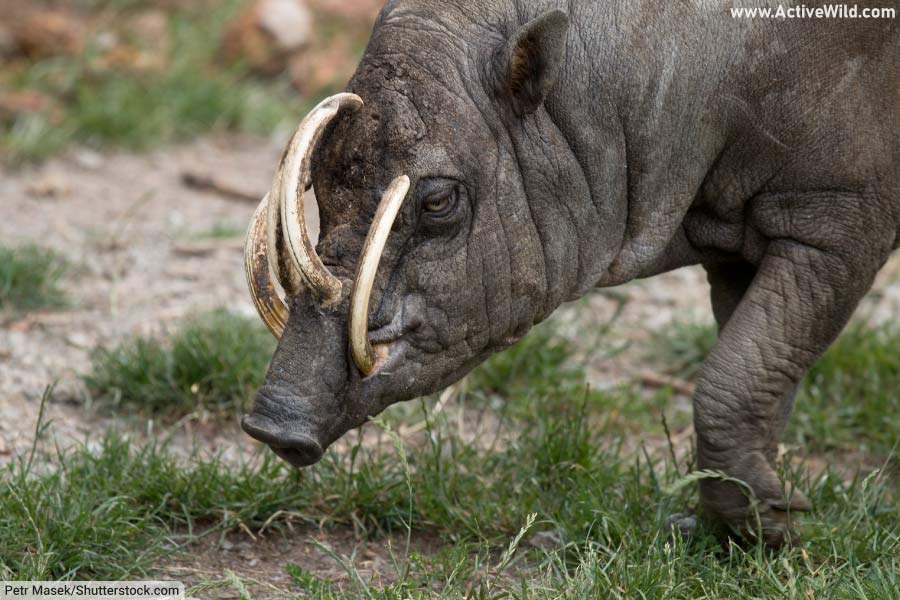
- Genus: Babyrousa
- Type of animal: Mammal
- Family: Suidae
- Where found: Asia
- Conservation status: see text
Babirusas are members of the pig family (Suidae) that live by rivers in rainforests on several Indonesian islands.
Until 2002, all babirusas were considered to be the same species. Today, three different species are recognized, and a fourth has been proposed:
| Species Name | Scientific Name | Where Found | Conservation Status |
| Buru babirusa | Babyrousa babyrussa | Buru, Mangole, Taliabu | Vulnerable |
| North Sulawesi babirusa | Babyrousa celebensis | Sulawesi (& neighboring islands) | Vulnerable |
| Togian babirusa | Babyrousa togeanensis | Togian Islands | Endangered |
| (Proposed species) Bola Batu babirusa | Babyrousa bolabatuensis | Sulawesi | Unassessed |
The distinctive tusks of male babirusas are actually elongated canine teeth. The canine teeth of the upper jaw grow upwards, piercing the flesh of the mouth to protrude from the top of the snout. The canine teeth of the lower jaw also grow upwards, protruding from the mouth to form the second pair of tusks.
Discover More With Active Wild
You can find out more about the North Sulawesi babirusa on this page: North Sulawesi Babirusa Facts
You can see more rainforest animals on this page: Rainforest Animals List with Pictures & Facts
Baboon
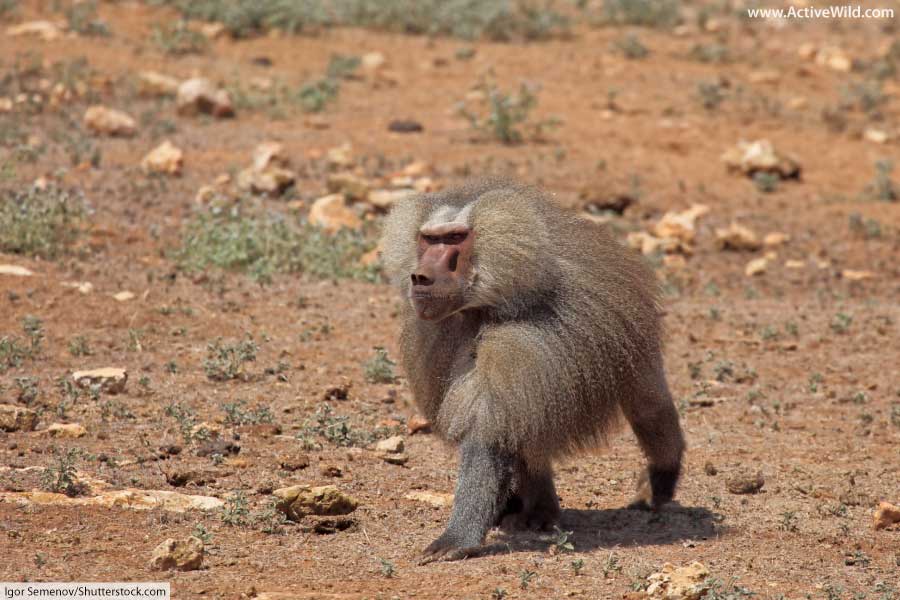
- Genus: Papio
- Type of animal: Mammal
- Family: Cercopithecidae
- Where found: Africa
- Conservation status: see text
Baboons are large monkeys in the genus Papio, which is part of the family Cercopithecidae – a group of primates also known as the “Old World monkeys”.
Unlike most monkeys, baboons are terrestrial (ground-dwelling), rather than arboreal (tree-dwelling).
The six species of baboon are listed below, together with the conservation status of each. All are found in Africa; the hamadryas baboon is also found on the Arabian Peninsula.
- Hamadryas baboon Papio hamadryas Least Concern
- Guinea baboon Papio papio Near Threatened
- Olive baboon Papio anubis Least Concern
- Yellow baboon Papio cynocephalus Least Concern
- Chacma baboon Papio ursinus Least Concern
- Kinda baboon Papio kindae Least Concern
Discover More With Active Wild
You can find out more about the olive baboon on this page: Olive Baboon Facts
You can find out more about baboons on this page: Baboon Facts
Discover more about primates on this page: Primates - The Ultimate Guide
Bactrian Camel
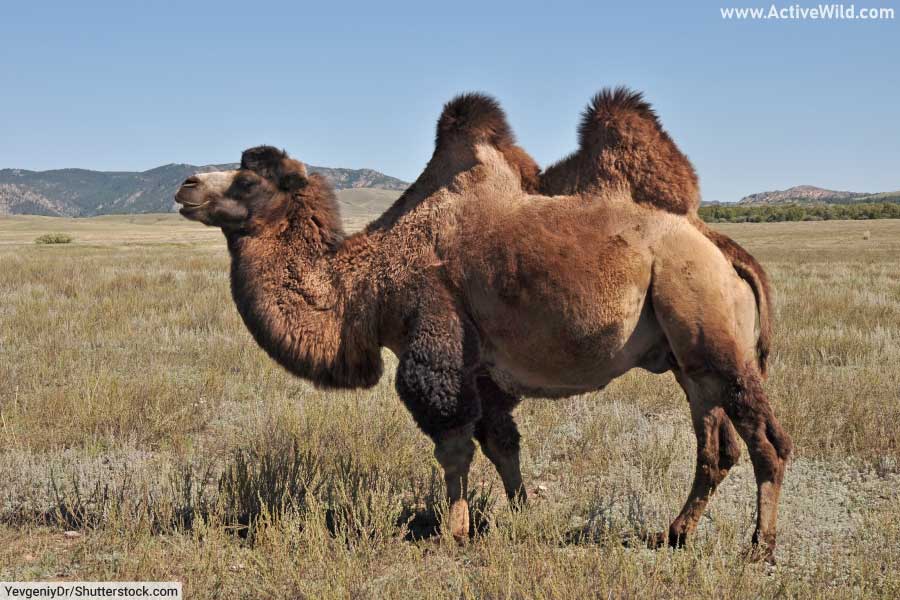
- Scientific name: Camelus bactrianus
- Type of animal: Mammal
- Family: Camelidae
- Where found: Asia
- Conservation status: Domestic
The Bactrian camel is an ungulate (hoofed mammal) in the camel family, Camelidae. It is the largest member of the family, which is also home to animals such as the dromedary, llama and alpaca.
The Bactrian camel is found in the Steppes of Central Asia, a vast region of dry grasslands. The Bactrian camel is able to withstand extremes of both heat and cold, and can go without water for many weeks.
The camel’s two humps store energy in the form of fat, and also help to dissipate body heat. Other adaptations for the dry environment include nostrils that can be closed, and long eyelashes for keeping the desert dust out of the eyes.
The closely-related wild Bactrian camel Camelus ferus, is a critically endangered species found in the plains of northern China and Mongolia.
The Bactrian camel is named after Bactria, a historical region of Central Asia.
Discover More With Active Wild
You can find out more about the Bactrian camel on this page: Bactrian Camel Facts
You can see more grassland animals on this page: Grassland Animals List with Pictures & Facts
Badger
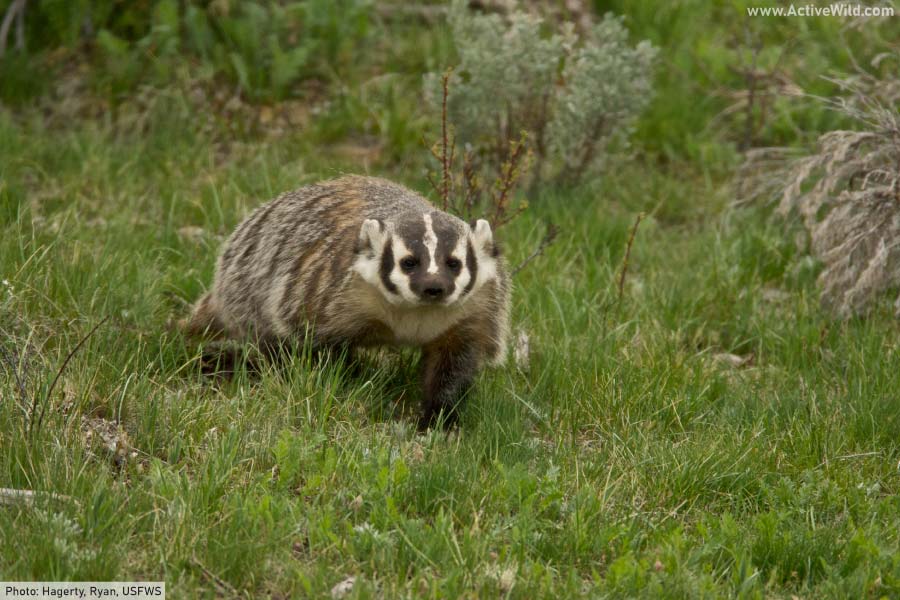
- Type of animal: Mammal
- Family: Mustelidae
- Where found: Europe, Asia, Africa, North America
- Conservation status: Various
Badgers are short-limbed, stocky animals that are well-adapted for digging, with strong claws and powerful legs. Most species have distinctive black and white facial markings.
The 15 living species of badger are divided between four subfamilies, all of which belong to the weasel family, Mustelidae.
Well-known badger species include the familiar black and white Eurasian badger; the American badger, found in grasslands in North America; and the honey badger, a species found in Africa and parts of Asia and known for its ferocity.
Discover More With Active Wild
You can find out more about the American Badger on this page: American Badger Facts
Find out more about the honey badger on this page: Honey Badger Facts
You can see more black and white animals on this page: Black And White Animals Pictures & Facts
Bald Eagle
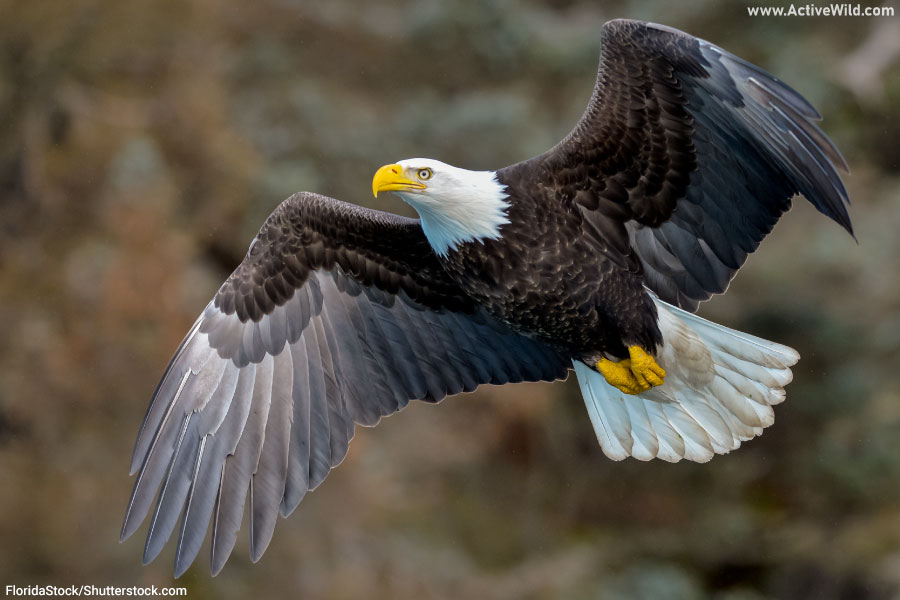
- Scientific name: Haliaeetus leucocephalus
- Type of animal: Bird
- Family: Accipitridae
- Where found: North America
- Conservation status: Least Concern
The bald eagle is a North American bird of prey found in Canada, the USA, and northern Mexico. It belongs to the genus Haliaeetus, a group known as the “sea eagles”. Fish make up the majority of its diet, but it will also prey on birds and small mammals.
The bald eagle is the national bird of the United States. The species was once included on the country’s endangered species list, but, thanks to a number of conservation measures, its population has now recovered.
Discover More With Active Wild
You can find out more about the bald eagle on this page: Bald Eagle Facts
Discover more iconic American animals on this page: American Animals Pictures & Facts
Check out our North American Bird ID Quiz for Android: North American ID Quiz for Android
Bandicoot
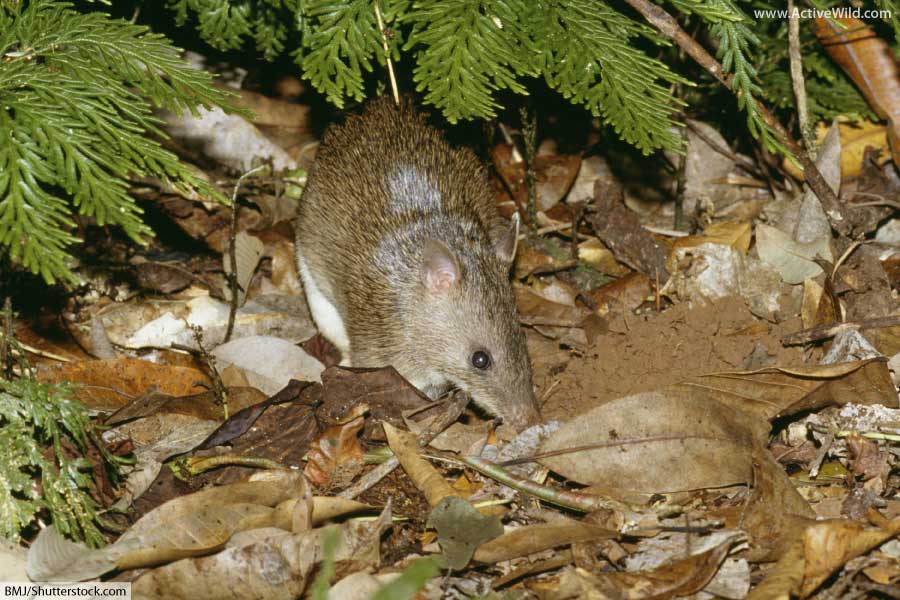
- Type of animal: Mammal
- Order: Peramelemorphia
- Where found: Australia, New Guinea
- Conservation status: Various
Bandicoots are long-nosed, rabbit-sized marsupials found in Australia and New Guinea. There are around 20 species of bandicoot, all belong to the order Peramelemorphia, which is also home to the bilby.
You can find out more about bandicoots on this page: Bandicoot Facts
Discover more amazing Australian animals on this page: Australian Animals List with Pictures & Facts
See more marsupials on this page: Marsupials Examples
Barn Owl
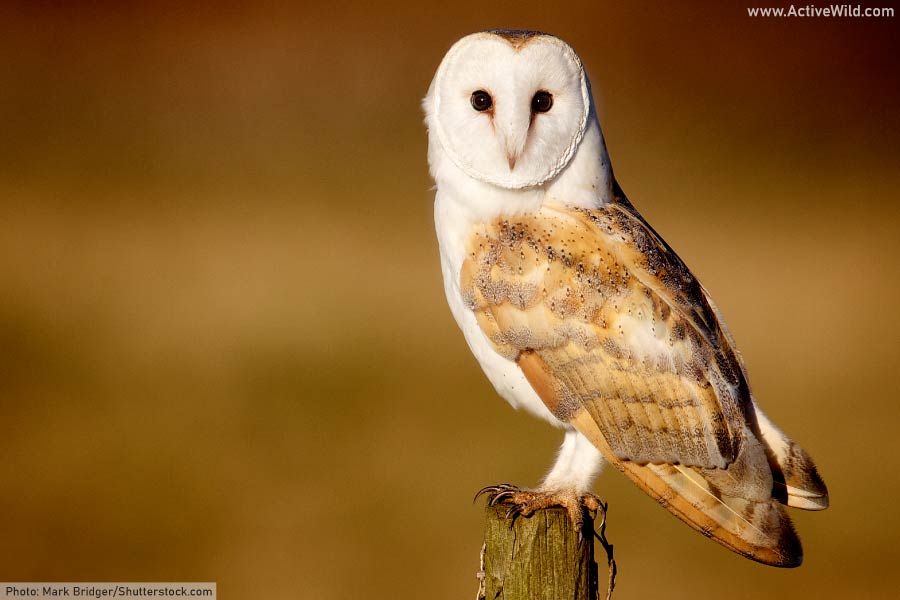
- Scientific name: Tyto alba
- Type of animal: Bird
- Family: Tytonidae
- Where found: All continents except Antarctica
- Conservation status: Least Concern
The barn owl is the most widely-distributed species of owl, being found in a wide range of habitats on every continent except Antarctica. The “alba” part of the barn owl’s scientific name refers to the owl’s white appearance (alba is Latin for white).
Like all owls, the barn owl’s feathers are adapted for silent flight. The species hunts mainly by sound, using its acute hearing to locate its prey.
Up to 90% of a barn owl’s diet consists of small mammals, in particular voles and shrews. The species also preys on birds, other small vertebrates, and insects.
Discover More With Active Wild
You can find out more about the barn owl on this page: Barn Owl Facts
Find out more about birds on this page: Birds - The Ultimate Guide
Check out our British Bird ID Quiz for Android: British Bird ID Quiz for Android
Check out our North American Bird ID Quiz for Android: North American ID Quiz for Android
Barnacle
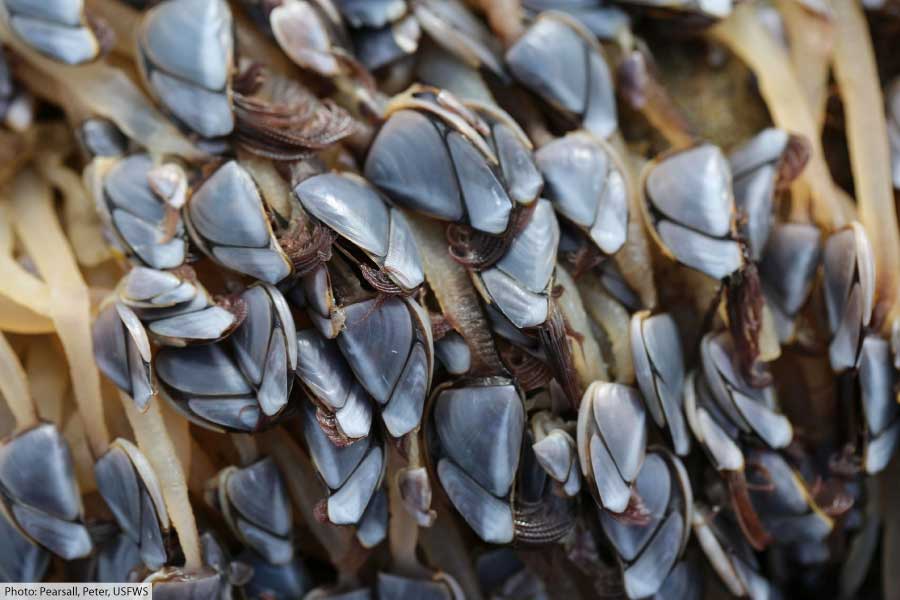
- Type of animal: Arthropod
- Class: Maxillopoda
- Subclass: Cirripedia
- Where found: Oceans worldwide
Barnacles are crustaceans that, after an initial larval stage, spend all their adult life attached to one surface. The cement they secrete for this purpose is the strongest-known natural glue.
There are more than 1,400 species of barnacles worldwide. The most common type of barnacle are acorn barnacles, which are found in temperate and tropical saltwater habitats.
Barnacles are omnivores that feed with feather-like appendages called “cirri”. These filter microscopic organisms floating in the water.
Barnacles first appeared over 300 million years ago, during the Carboniferous Period of the Paleozoic Era.
Discover More With Active Wild
You can find out more about crustaceans on this page: Crustaceans - The Ultimate Guide
Discover more amazing ocean animals on this page: Ocean Animals - Pictures & Facts
Barracuda
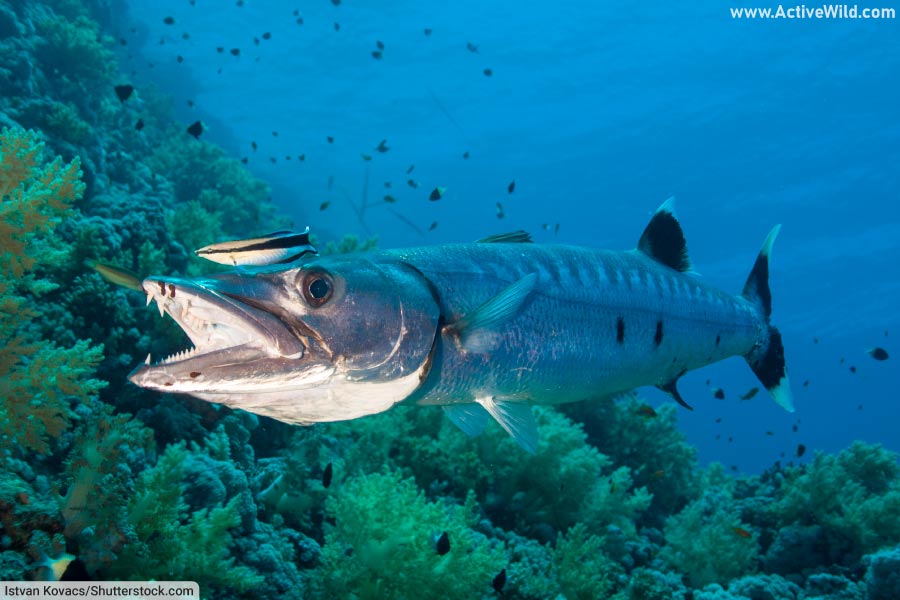
- Genus: Sphyraena
- Type of animal: Fish
- Family: Sphyraenidae
- Where found: Tropical & subtropical waters worldwide
- Conservation status: Various
Barracudas are predatory saltwater fish with long, streamlined bodies and large jaws. There are 28 species of barracuda, all are in the genus Sphyraena. Larger species can grow to over 1.5 m (5 ft.) in length, and some can swim at speeds of up to 35 mph (56 km/h).
Barracudas use their speed and power to capture their prey, which consists almost entirely of other fish.
Discover More With Active Wild
You can see more amazing fish on this page: Types Of Fish
Become a fish expert! Fish - The Ultimate Guide
Basking Shark
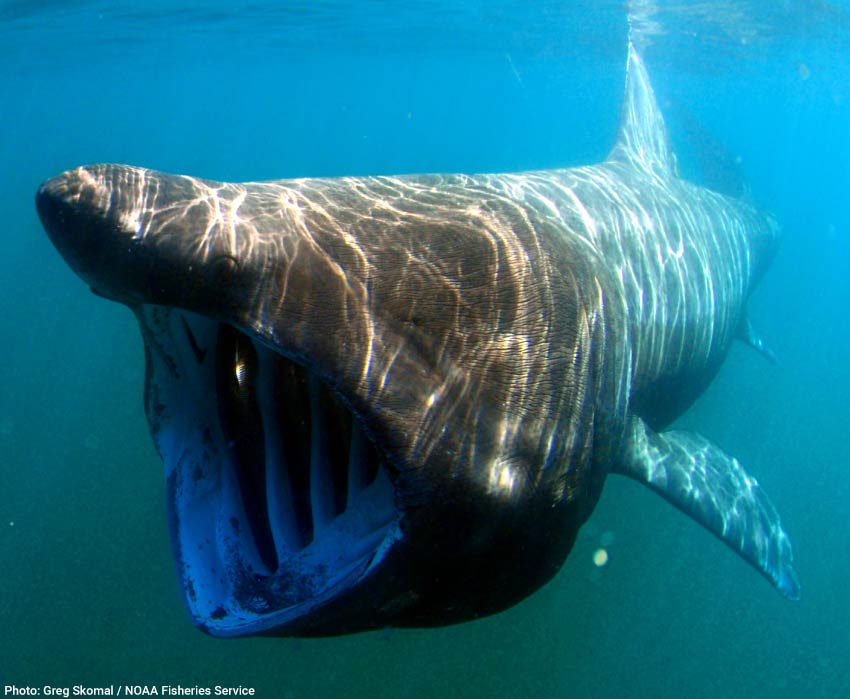
- Scientific name: Cetorhinus maximus
- Type of animal: Fish
- Family: Cetorhinidae
- Where found: Temperate waters worldwide
- Conservation status: Endangered
The basking shark is the world’s second largest species of fish. Only the whale shark is bigger.
The basking shark, like the whale shark, but unlike most other sharks, is a filter feeder. Instead of actively hunting fish and other large prey, the basking shark simply opens its mouth while swimming. Comb-like structures called “gill rakers” in its mouth filter small food items such as zooplankton from the seawater.
Discover More With Active Wild
You can find out more about the basking shark on this page: Basking Shark Facts
You can see more sharks on this page: Types Of Sharks - Pictures & Facts
Find out more about the life-cycle of a shark on this page: Do Sharks Lay Eggs?
Bat-Eared Fox
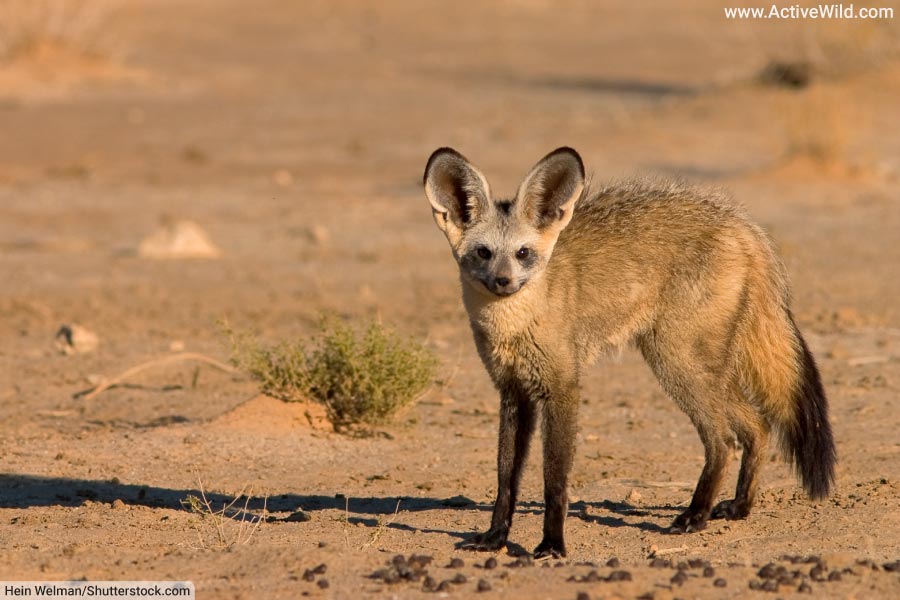
- Scientific name: Otocyon megalotis
- Type of animal: Mammal
- Family: Canidae
- Where found: Africa
- Conservation status: Least Concern
The bat-eared fox is a small canid (member of the dog family, Canidae) found in dry grasslands in sub-Saharan Africa.
Like both the fennec fox and the kit fox, which are also found in dry or desert habitats, the bat-eared fox has large ears. These play a dual role, both keeping the fox cool by dissipating its body heat, and helping it to locate prey.
The bat-eared fox is the only insectivorous (insect-eating) canid. The bulk of its diet consists of the harvester termite.
There are two populations of bat-eared fox. One is found in southern Africa, the other in western Africa.
Discover More With Active Wild
You can see EVERY member of the dog family on this page: Every Dog Species - Pictures & Facts
You can see more grassland animals on this page: Grassland Animals List
Bats
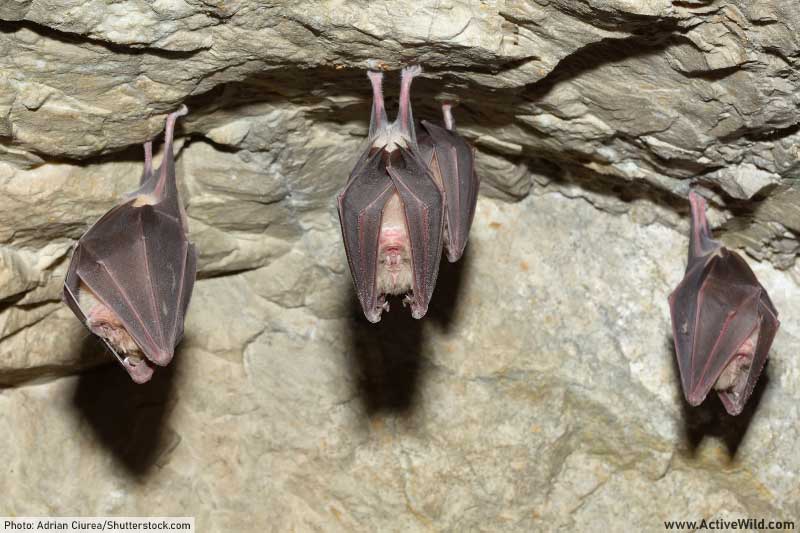
- Type of animal: Mammal
- Order: Chiroptera
- Where found: All continents except Antarctica
- Conservation status: Various
Bats are flying mammals whose wings are supported by specially-elongated finger bones.
Bats make up the order Chiroptera. There are around 1,400 species of bat, making Chiroptera the second-largest mammalian order. Almost a quarter of all living mammal species are bats.
(The largest mammalian order is Rodentia – the rodents, which accounts for around 40% of all mammals.)
Bats are traditionally split into two main types: Megachiroptera (also known as megabats, or fruit bats), which mainly eat fruit and nectar, and Microchiroptera (also known as microbats or echolocating bats), which mainly eat insects.
Discover More With Active Wild
You can find out more about bats on this page: Bats - The Ultimate Guide
See more mammals on this page: Types of Mammals
Bear
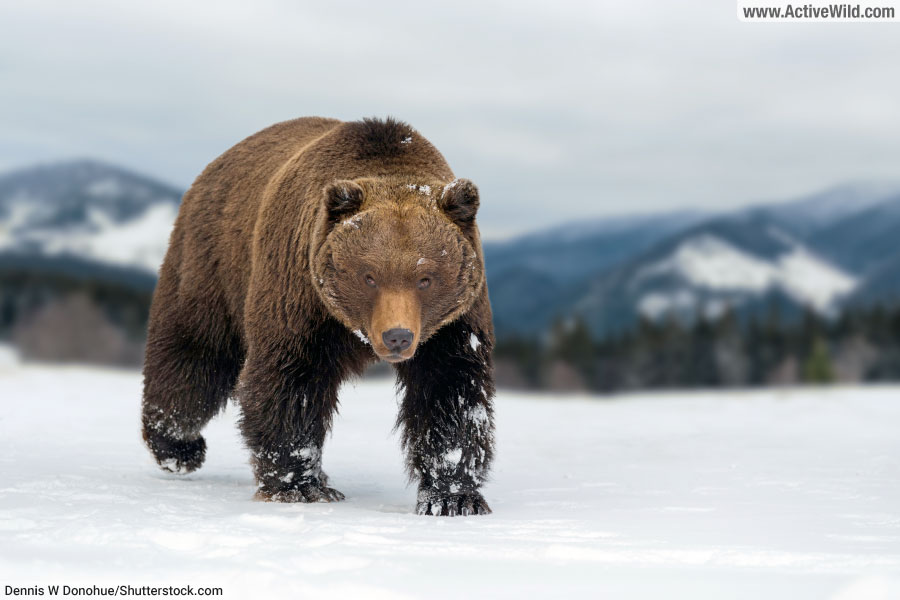
- Type of animal: Mammal
- Family: Ursidae
- Where found: All continents except Antarctica
- Conservation status: Various
There are eight living species of bear: the polar bear, brown bear, American black bear, spectacled bear, Asian black bear, sloth bear, sun bear, and giant panda. Together they make up the family Ursidae.
Bears are large, powerful mammals. Bears typically have an omnivorous diet, but this varies from species to species: the polar bear is almost entirely carnivorous, while the giant panda is mainly herbivorous.
Discover More With Active Wild
See pictures and facts on EVERY species of bear on this page: Types Of Bears
Become a bear expert: Bears - The Ultimate Guide
Beaver
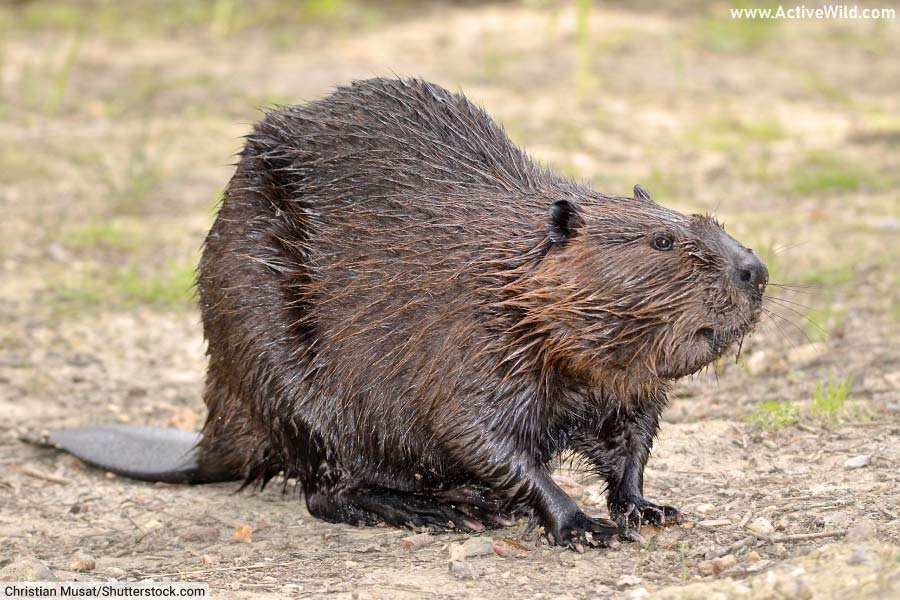
- Genus: Castor
- Type of animal: Mammal
- Family: Castoridae
- Where found: North America, Europe
- Conservation status: Least Concern
Beavers are large rodents with distinctive, paddle-like tails. There are two species of beaver: the North American beaver (Castor canadensis), which lives in the United States and Canada, and the Eurasian beaver (Castor fiber), which is found throughout much of Northern Europe.
The conservation status of both species of beaver is “Least Concern”.
Beavers construct dams by felling trees with their sharp teeth. The resulting pond not only provides the beavers with protection from predators, but also creates a wetland ecosystem in which other species can live.
Because of their importance to their respective ecosystems, beavers are considered to be keystone species.
Discover More With Active Wild
You can find out more about the North American beaver on this page: North American Beaver Facts
Discover more amazing North American animals on this page: North American Animals List with Pictures & Facts
Bee
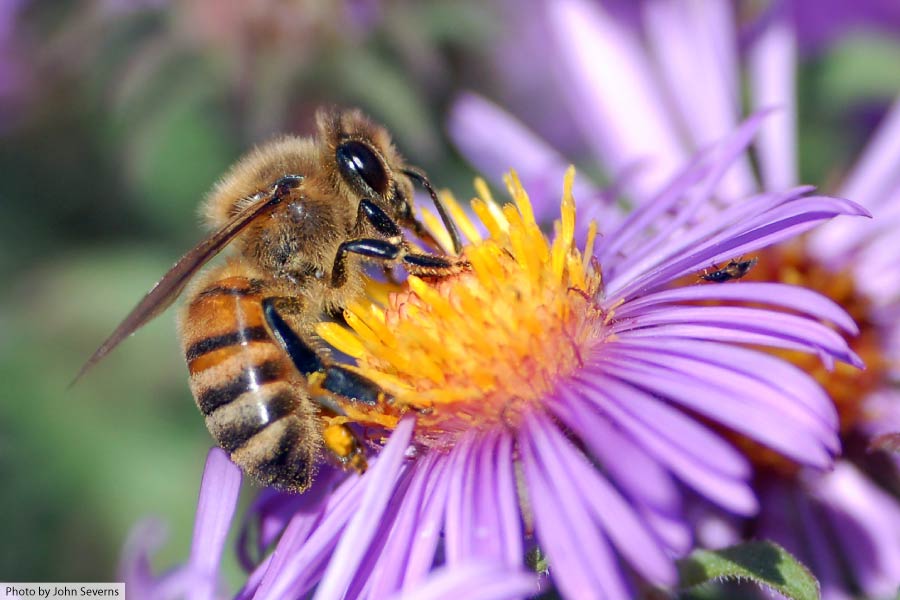
- Superfamily: Apoidea
- Type of animal: Insect
- Where found: All continents except Antarctica
- Conservation status: Various
Bees are insects in the superfamily Apoidea, which is also home to certain types of wasps. Bees are related to both wasps and ants, and together, these insect groups make up the order Hymenoptera.
There are over 16,000 bee species, including honey bees, bumblebees, stingless bees and carpenter bees. Many bees live in colonies formed by a single queen who is responsible for laying the eggs of all of the other bees in the colony.
Bees evolved alongside flowering plants during the Cretaceous Period. As pollinators, bees are vitally important for many terrestrial (land-based) ecosystems. A quote often attributed to Einstein states: “If the bee disappears from the surface of the Earth, man would have no more than four years left to live.”
Discover More With Active Wild
You can find out more about honey bees on this page: Honey Bee Facts
Discover more about insects: Insects – The Ultimate Guide
Find out why insects are animals: Are Insects Animals?
Beetle
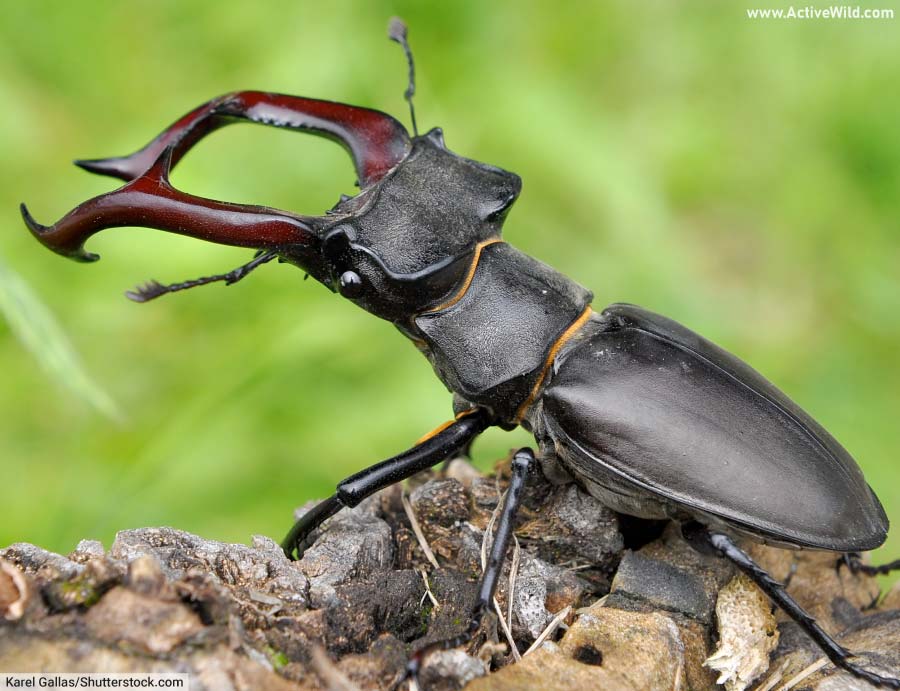
- Type of animal: Insect
- Order: Coleoptera
- Where found: All continents except Antarctica
- Conservation status: Various
Beetles are insects in the order Coleoptera. With around 400,000 recognized species, Coleoptera is the largest of all animal orders. Beetles make up around 25% of all known animal species!
The forewings of beetles have adapted to form hardened wing cases known as elytra. These provide protection when the beetle is crawling through terrain that might damage the wings of other types of insects.
Familiar types of beetles include: fireflies, dung beetles, glowworms, ladybugs / ladybirds, Hercules beetles, tiger beetles and weevils.
Discover More With Active Wild
You can find out more about beetles on this page: Beetles - The Ultimate Guide
Discover more about insects: Insects – The Ultimate Guide
Find out why insects are animals: Are Insects Animals?
Beluga Whale
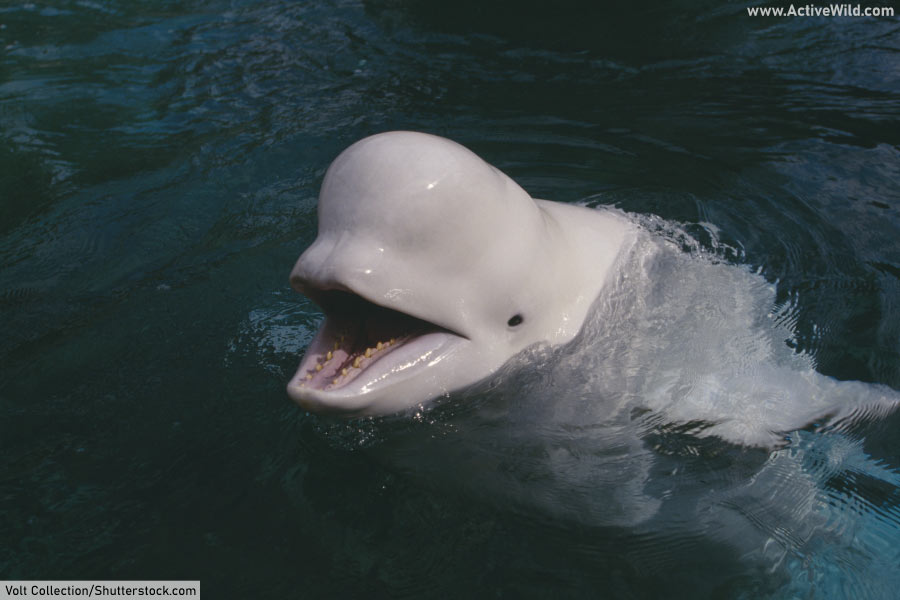
- Scientific name: Delphinapterus leucas
- Type of animal: Mammal
- Family: Monodontidae
- Where found: The Arctic and sub-Arctic
- Conservation status: Least Concern
The beluga whale is a white whale found in Arctic and sub-Arctic waters. It is related to the narwhal; the two species are the only members of the family Monodontidae.
The distinctive bump on the front of the beluga whale’s head is known as a “melon”. It is an organ that assists with echolocation. (Echolocation is the means by which animals such as whales and dolphins “see” using sound.)
Discover More With Active Wild
You can find out more about the beluga whale on this page: Beluga Whale Facts
Find out more about whales on this page: Whale Facts
See more amazing whales on this page: Top Ten Largest Whales
Discover more amazing Arctic animals on this page: Arctic Animals
Bilby (Greater)
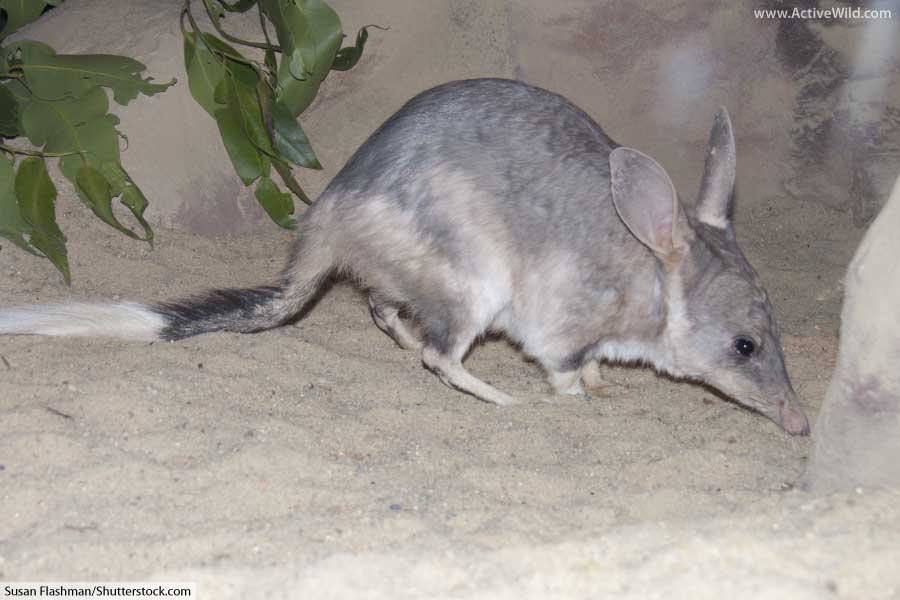
- Scientific name: Macrotis lagotis
- Type of animal: Mammal
- Family: Thylacomyidae
- Where found: Australia
- Conservation status: Vulnerable
Bilbies are rabbit-sized marsupials that live in the desert region of Central Australia. The lesser bilby became extinct in the 1950’s, leaving the greater bilby as the only surviving bilby.
Discover More With Active Wild
You can find out more about the Bilby on this page: Bilby Facts
See more marsupials on this page: Marsupials Examples
Discover more amazing Australian animals on this page: Australian Animals List with Pictures & Facts
Binturong
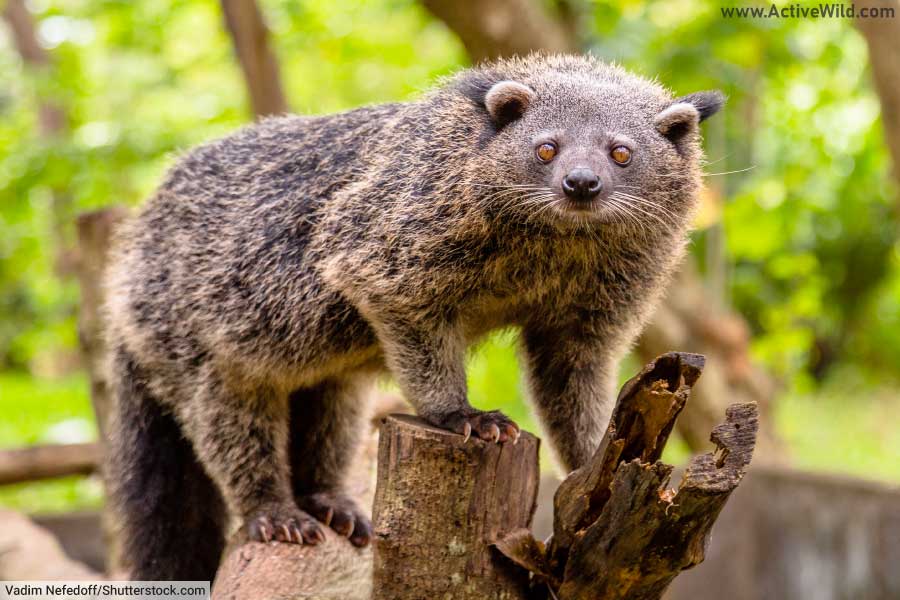
- Scientific name: Arctictis binturong
- Type of animal: Mammal
- Family: Viverridae
- Where found: Asia
- Conservation status: Vulnerable
The binturong, also known as the bearcat, is a rainforest mammal of south and Southeast Asia. It is the largest member of the family Viverridae, which also includes animals such as mongooses and civets.
Binturongs are one of the few members of the mammalian order Carnivora to have prehensile* tails.
* Prehensile = able to grip
Discover More With Active Wild
You can find out more about the binturong on this page: Binturong Facts
You can see more rainforest animals on this page: Rainforest Animals List with Pictures & Facts
Bison
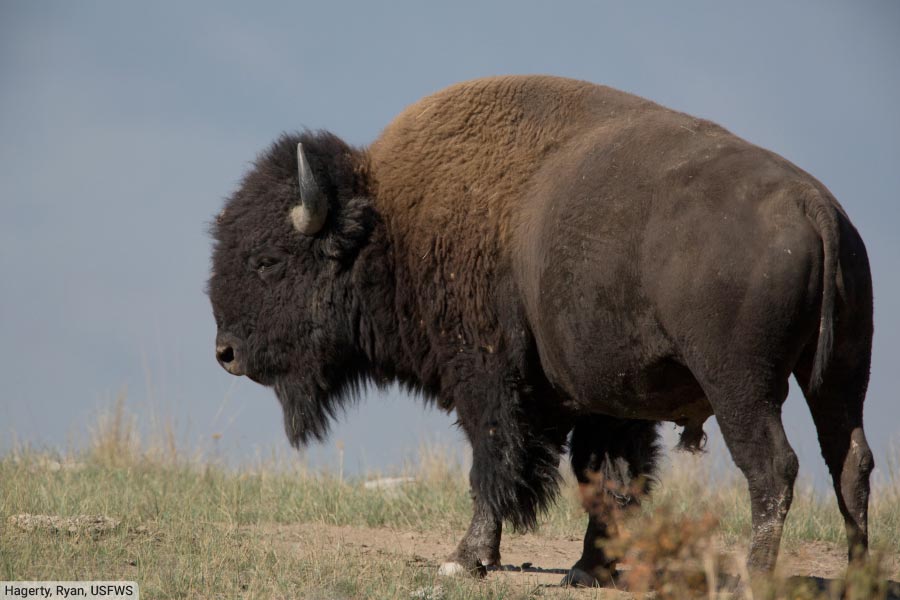
- Genus: Bison
- Type of animal: Mammal
- Family: Bovidae
- Where found: North America, Europe
- Conservation status: Near Threatened
Bison are large, powerful hooved animals that live in herds. There are two species of bison: the American bison (Bison bison), found in grasslands in Canada, the USA and Mexico; and the European bison (Bison bonasus), found in scattered locations in Europe.
Both bison species have the conservation status “Near Threatened”.
The American bison is also known as the buffalo, but is not closely related to “true” buffalo such as the African buffalo and water buffalo.
The European bison (Bison bonasus) was hunted to extinction in the wild, and has since been reintroduced in several locations in Europe. Today, the bison populations of several European countries, including Poland, Russia and Belarus, number over 1,000 individuals.
Discover More With Active Wild
You can find out more about the American bison on this page: American Bison Facts
See more iconic American animals on this page: American Animals List with Pictures & Facts
Discover more horned animals on this page: Animals With Horns - Pictures & Facts
Black-Backed Jackal
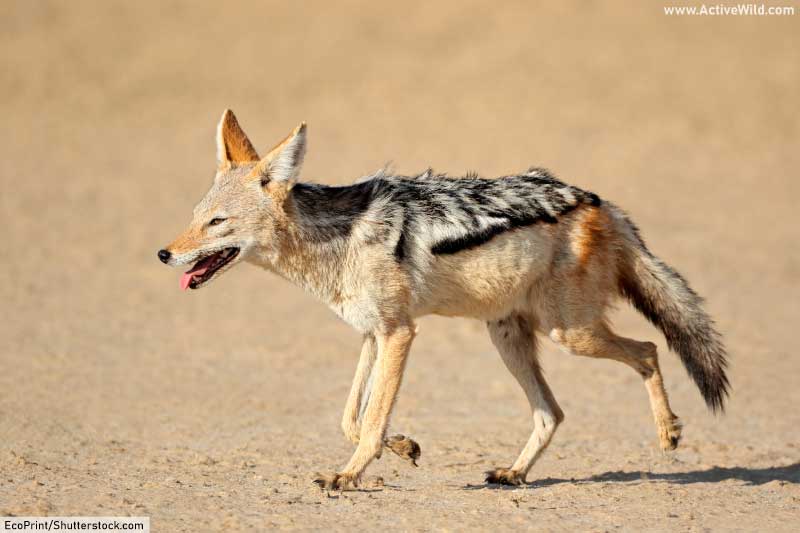
- Scientific name: Lupulella mesomelas (formerly Canis mesomelas)
- Type of animal: Mammal
- Family: Canidae
- Where found: Africa
- Conservation status: Least Concern
The black-backed jackal is one of three species of jackal (the others being the side-striped jackal and the golden jackal).
The black-backed jackal and the closely-related side-striped jackal are found in Africa. Both belong to the genus Lupulella. (The golden jackal, which is found in Eurasia, is more closely related to the gray wolf, and like the wolf, belongs to the genus Canis.)
Although omnivorous, meat forms the bulk of the black-backed jackal’s diet. The species hunts a wide variety of prey, from insects to mid-sized antelopes. It will also eat carrion and plant matter.
There are two black-backed jackal subspecies. The Cape black-backed jackal (Lupulella mesomelas mesomelas) is found in southern Africa; the East African black-backed jackal (Lupulella mesomelas schmidti) is found in East Africa. The two groups are thought to have separated around 1.4 million years ago.
Discover More With Active Wild
You can find out more about the black-backed jackal on this page: Black-Backed Jackal Facts
You can see EVERY member of the dog family on this page: Wild Dog Species List with Pictures & Facts
Discover more African animals on this page: African Animals List with Pictures & Facts
Black Bear (American)
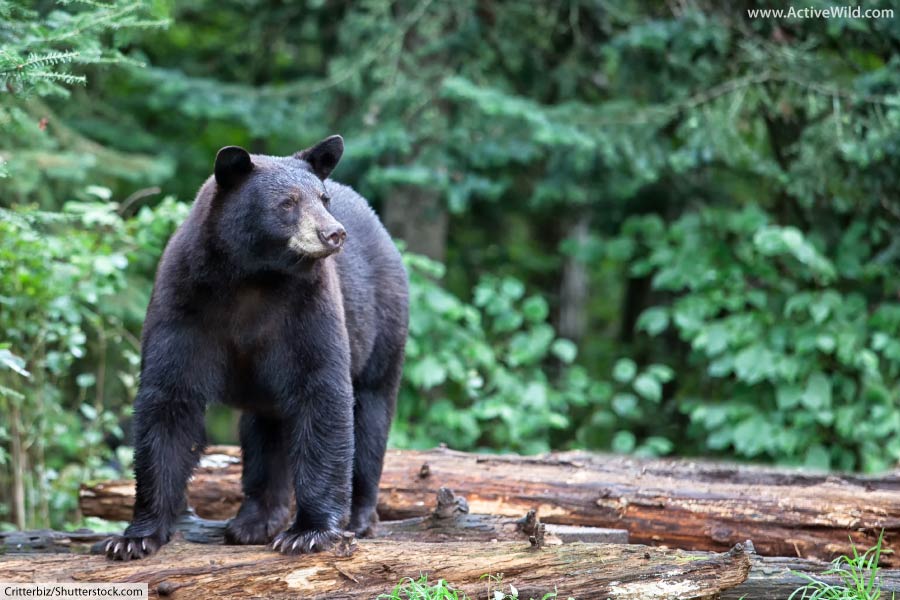
- Scientific name: Ursus americanus
- Type of animal: Mammal
- Family: Ursidae
- Where found: North America
- Conservation status: Least Concern
The American black bear may be the smallest of the three bear species found in North America (the other two being the brown bear and the polar bear), but on average it’s the world’s third-largest species of bear.
In North America, the American black bear is known simply as the “black bear”. As the name suggests, its coat is usually black, but in some regions the “black” bear can be brown, cinnamon-colored, or even blonde.
A skilled climber, the American black bear has an arboreal (tree-dwelling) lifestyle, particularly when young. Its claws are shorter and sharper than those of the brown bear – an adaptation for climbing trees. As they grow older, black bears become more terrestrial (ground dwelling).
Typically for a bear, the black bear is an omnivore. However, plants make up the majority (up to 85%) of its diet.
Discover More With Active Wild
You can find out more about the American black bear on this page: American Black Bear Facts
See pictures and facts on EVERY species of bear on this page: Types Of Bears
Become a bear expert: Bears - The Ultimate Guide
Black-Footed Ferret
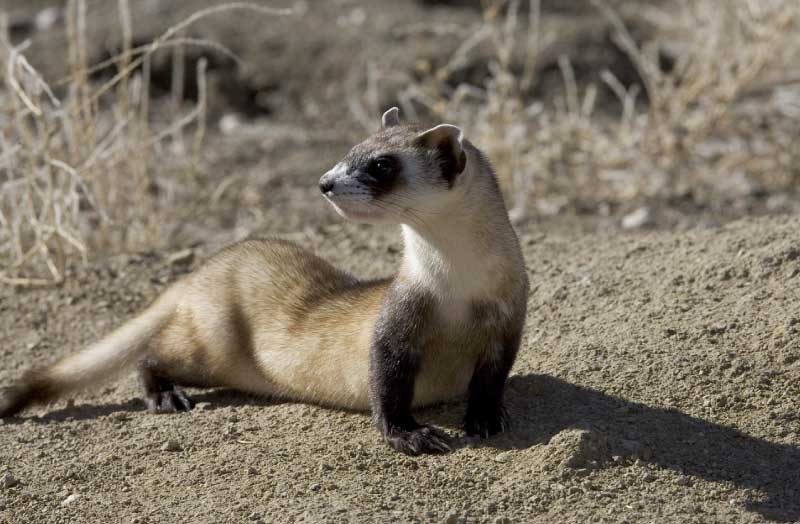
- Scientific name: Mustela nigripes
- Type of animal: Mammal
- Family: Mustelidae
- Where found: North America
- Conservation status: Endangered
The black-footed ferret is a member of the weasel family, Mustelidae. It has black legs and black patches over its eyes. The species is found in grasslands in North America.
A carnivore, the black-footed ferret preys mainly on prairie dogs.
In the late twentieth century, the black-footed ferret was considered to be extinct in the wild. This was caused both by a reduction in prairie dog numbers (the rodents faced heavy persecution as they damage crops) and by the spread of sylvatic plague, a disease that affects both prairie dogs and the black-footed ferret itself.
The black-footed ferret has since been re-introduced into the wild from captive stock, although its population remains small (around 200 adult individuals).
Discover More With Active Wild
You can find out more about the black-footed ferret on this page: Black-Footed Ferret Facts
See more iconic American animals on this page: American Animals List with Pictures & Facts
You can see more endangered animals on this page: Endangered Animals List with Pictures & Facts
Black Mamba
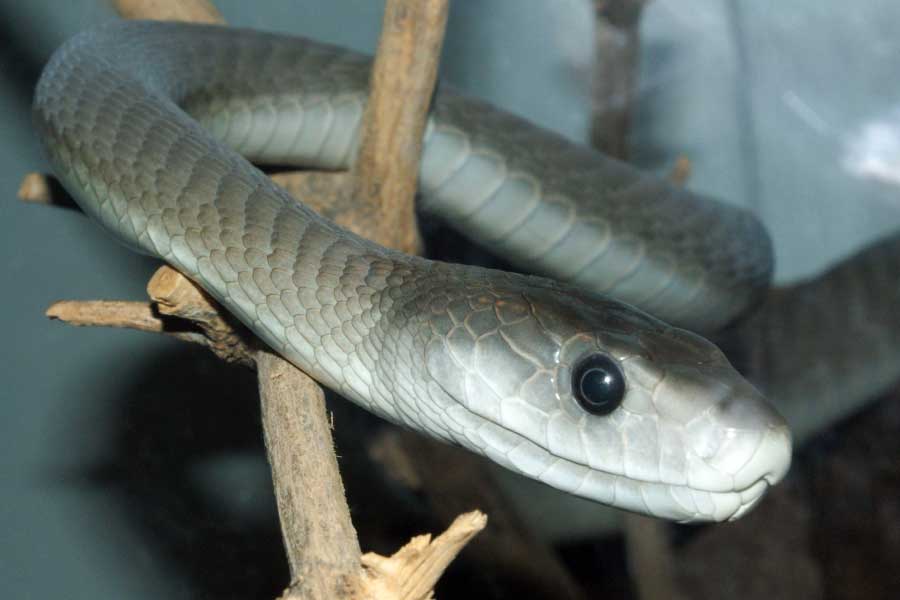
- Scientific name: Dendroaspis polylepis
- Type of animal: Reptile
- Family: Elapidae
- Where found: Africa
- Conservation status: Least Concern
The black mamba is a highly-venomous snake found in Sub-Saharan Africa.
The ‘black’ in the snake’s name comes from the dark black color of the inside of its mouth. The snake’s skin is dark olive-grey, with lighter underparts.
The average length of a black mamba is around 2.5 m / 8.20 ft., but individuals can reach up to 4.4 m / 14.44 ft.
The black mamba’s bite is potentially fatal, and due to the snake’s size and ability to rear up off the ground, bites can occur on the victim’s torso as well as on the legs.
Despite this, the snake’s legendary speed and aggressive nature are somewhat exaggerated; the black mamba will usually only attack if it feels threatened.
Discover More With Active Wild
You can find out more about the black mamba on this page: Black Mamba Facts
Discover more amazing snakes on this page: Types of Snakes
Become a reptile expert: Reptiles – The Ultimate Guide
Black Rhino
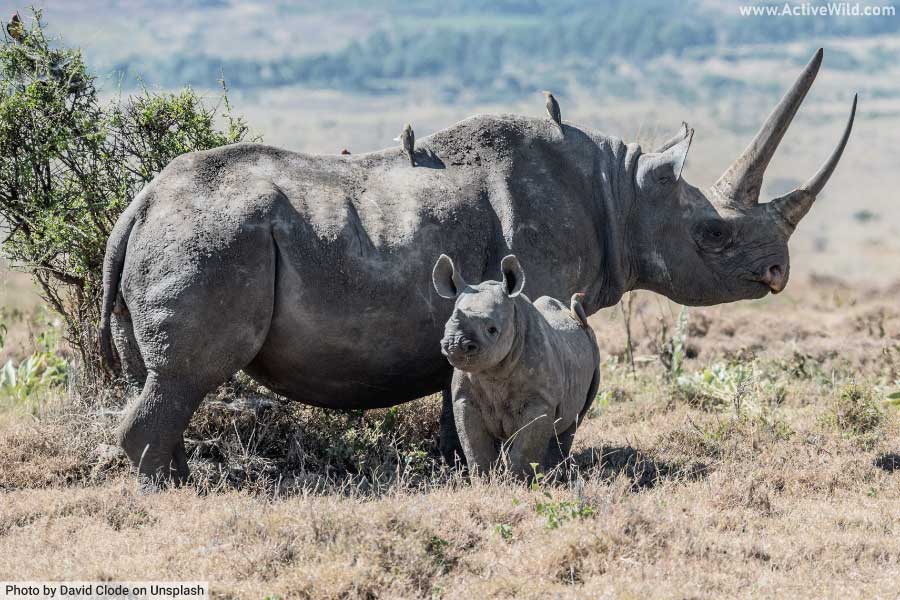
- Scientific name: Diceros bicornis
- Type of animal: Mammal
- Family: Rhinocerotidae
- Where found: Africa
- Conservation status: Critically Endangered
The black rhino is one of two rhinos found in Africa (the other being the white rhino), and one of five rhino species worldwide.
Black rhinos are distinguished from white rhinos not by their color (despite their names, both species are grey), but by the shape of their lips. Black rhinos have pointed lips, and are also known as “hook-lipped rhinos”.
With a population of around 5,500, the black rhino is a critically endangered species. The primary threat to the species is poaching; its horn is used in traditional Asian medicine.
Discover More With Active Wild
You can find out more about the black rhino on this page: Black Rhino Facts
You can see more critically endangered animals on this page: Critically Endangered Species List
Black Vulture
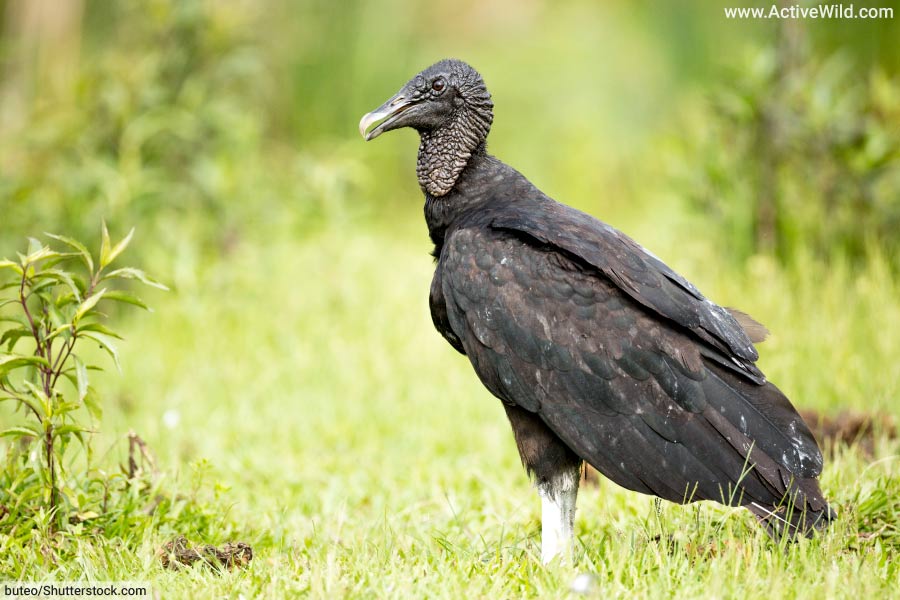
- Scientific name: Coragyps atratus
- Type of animal: Bird
- Family: Cathartidae
- Where found: South America; North America
- Conservation status: Least Concern
The black vulture is a member of the New World vulture family, Cathartidae. New world vultures are not closely related to Old World vultures; similarities in their appearance and behavior are a result of convergent evolution.
(Convergent evolution is a phenomenon in which unrelated groups evolve to fill a similar niche.)
Like other vultures, the black vulture is primarily a scavenger. It locates food with its acute eyesight.
The black vulture is found throughout much of South America and in southern North America. Its plumage is black, and it has a grey, featherless head.
Discover More With Active Wild
Find out more about birds on this page: Birds - The Ultimate Guide
Discover more amazing birds on this page: Types of Birds
Check out our North American Bird ID Quiz for Android: North American ID Quiz for Android
Blue Jay
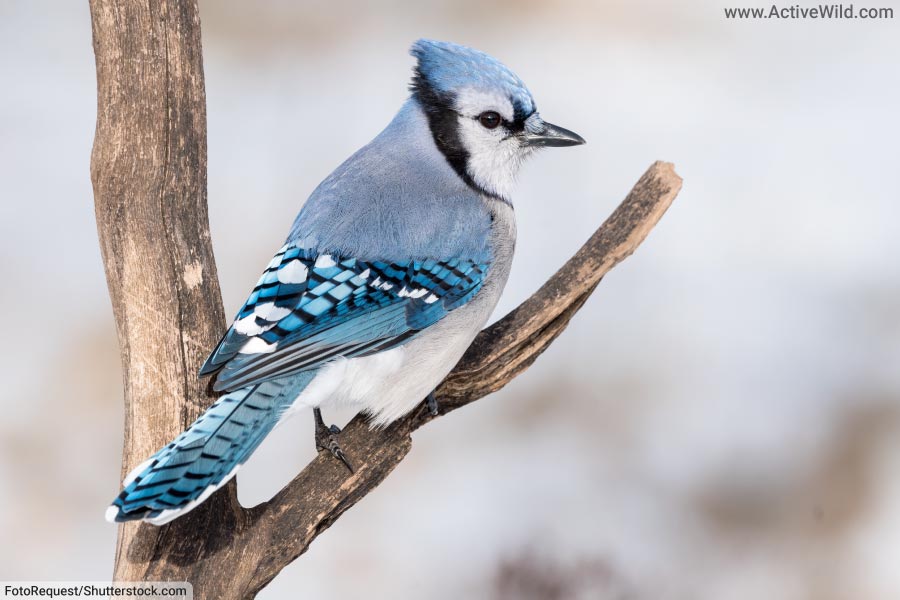
- Scientific name: Cyanocitta cristata
- Type of animal: Bird
- Family: Corvidae
- Where found: North America
- Conservation status: Least Concern
With its bright blue plumage, the blue jay is one of the more distinctive members of the crow family, Corvidae. The species' body length ranges from 22 - 30 cm / 9 - 12 in. with females being slightly smaller than males.
Found throughout eastern North America, the blue jay is a forest bird, also common in urban areas.
Blue jays are highly territorial and will aggressively drive other birds away from their feeding areas.
The species mates for life, with both parents providing parental care and protecting the nest from predators.
Blue jays are omnivorous, with plant material such as seeds and fruits making up the bulk of their diet.
The average lifespan of a blue jay in the wild is 7 years; in captivity it can potentially live much longer.
Discover More With Active Wild
Find out more about birds on this page: Birds - The Ultimate Guide
Discover more amazing birds on this page: Types of Birds
Check out our North American Bird ID Quiz for Android: North American ID Quiz for Android
Blue Morpho Butterfly
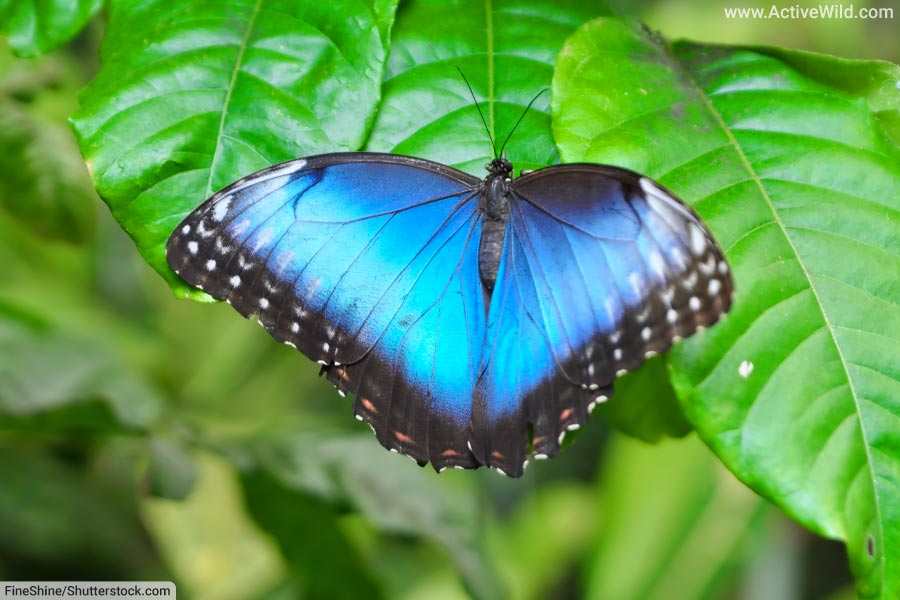
- Type of animal: Insect
- Family: Nymphalidae
- Where found: South America
- Conservation status: Various
Blue morphos are large, bright blue butterflies found in South America (and southern parts of North America).
Several butterfly species of genus Morpho are known as blue morphos. These include the Menelaus blue morpho (Morpho menelaus), a species found in Central and South America with a 12 cm wingspan and iridescent blue wings.
Discover More With Active Wild
You can find out more about the blue morpho on this page: Blue Morpho Facts
Discover more about insects: Insects – The Ultimate Guide
Find out why insects are animals: Are Insects Animals?
Blue Whale
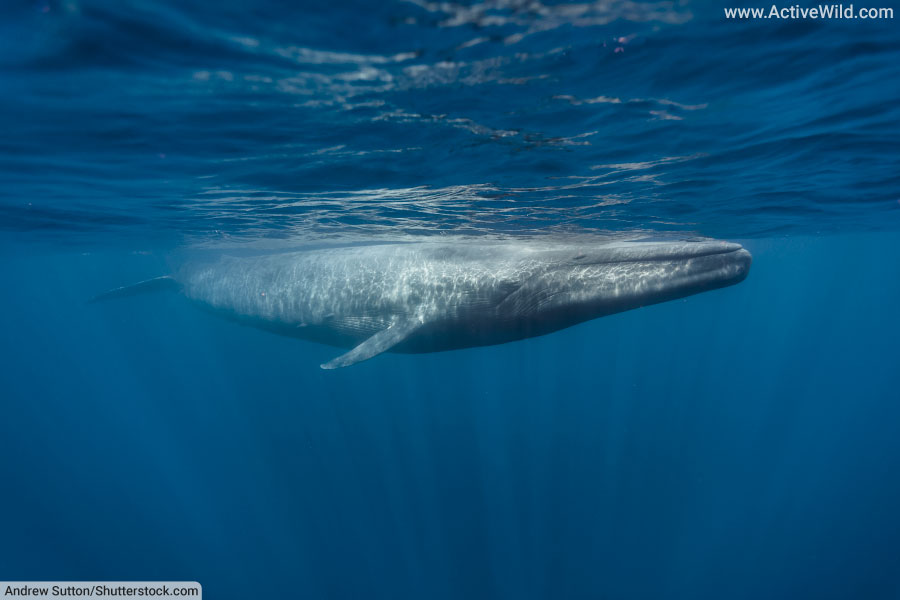
- Scientific name: Balaenoptera musculus
- Type of animal: Mammal
- Family: Balaenopteridae
- Where found: Oceans worldwide
- Conservation status: Endangered
The blue whale is the largest animal ever to have lived on Earth, reaching lengths of up to 33.3 meters (109 ft.) and weights of up to 173 tons (190.7 short tons).
Despite its great size, the blue whale eats only very small animals, in particular krill, a type of crustacean. The whale filters food from the seawater using special comb-like mouthparts known as baleen plates.
The blue whale is one of a number of “baleen whales” that feed in this manner.
Discover More With Active Wild
You can find out more about the blue whale on this page: Blue Whale Facts
Discover more amazing ocean animals on this page: Ocean Animals
Boa Constrictor
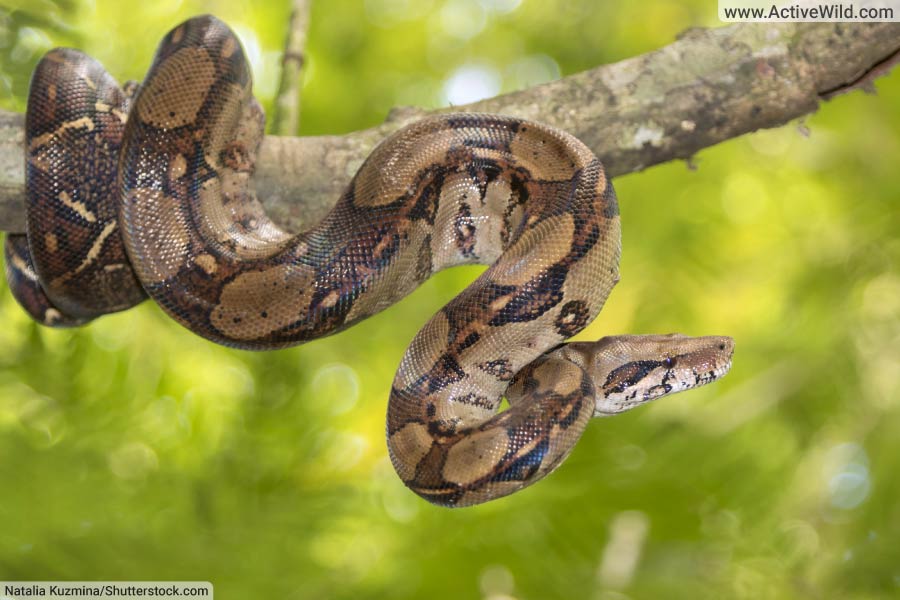
- Scientific name: Boa constrictor
- Type of animal: Reptile
- Family: Boidae
- Where found: South America
- Conservation status: Least Concern
The boa constrictor is a large snake found in South and Central America (an introduced population also exists in Florida). The boa constrictor has distinctive dark markings along its back and sides. Like all constrictors, it suffocates its prey by squeezing it with its muscular body.
Discover More With Active Wild
Find out more about boa constrictors here: Boa Constrictor Facts
Discover more amazing snakes on this page: Types of Snakes
Become a reptile expert: Reptiles – The Ultimate Guide
Boar
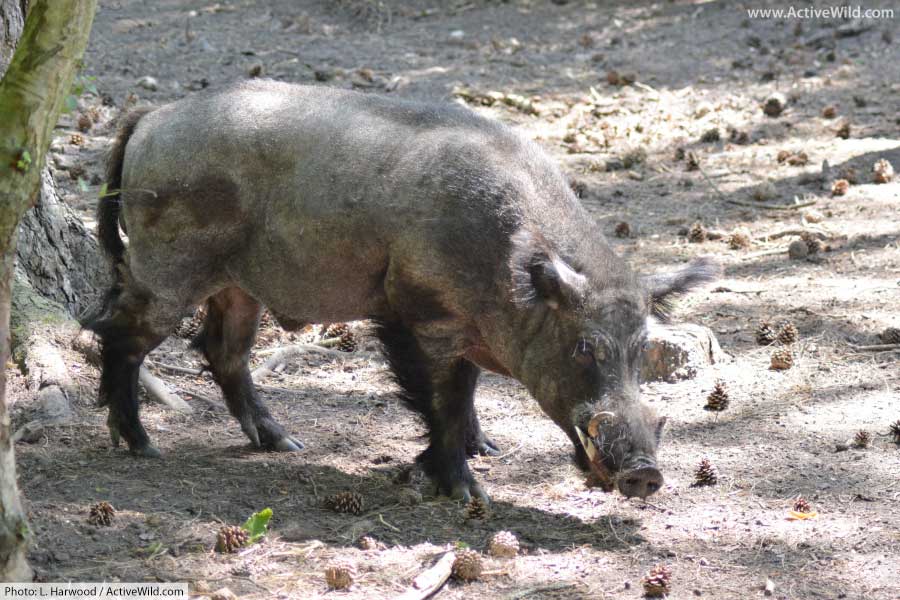
- Scientific name: Sus scrofa
- Type of animal: Mammal
- Family: Suidae
- Where found: Eurasia; Africa
- Conservation status: Least Concern
The wild boar is a large, powerful mammal. Although mainly thought of as a forest species, the boar can also live in a wide range of other habitats, including mountains and deserts.
A member of the pig family, Suidae, the wild boar is found throughout much of Europe and Asia. Its main predator is the grey wolf.
Discover More With Active Wild
Find out more about mammals on this page: Mammals - The Ultimate Guide
Learn about the different types of mammals on this page: Types of Mammals
Bobcat
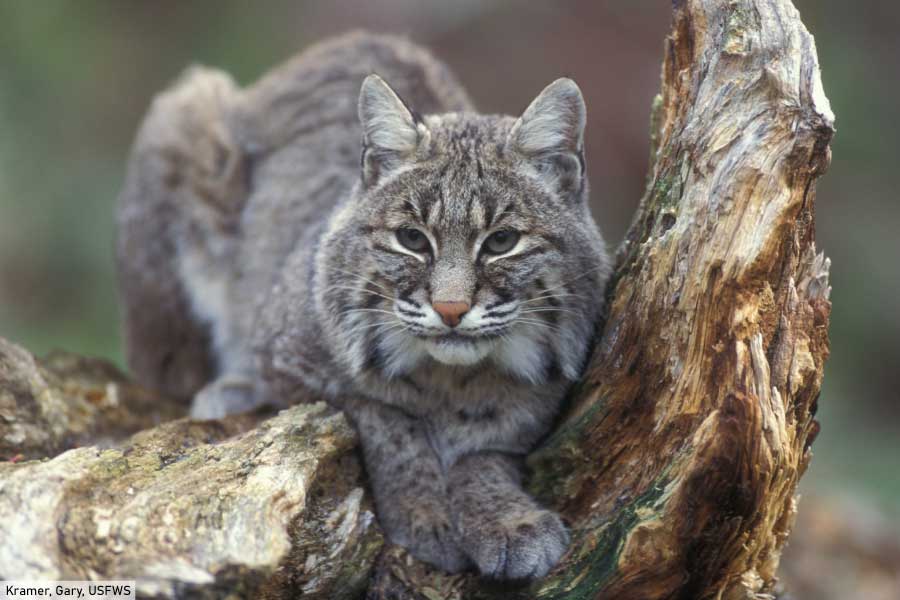
- Scientific name: Lynx rufus
- Type of animal: Mammal
- Family: Felidae
- Where found: North America
- Conservation status: Least Concern
The bobcat is a wild cat around twice the size of a domestic cat. It is found throughout much of North America, and is one of the four species in the genus Lynx. (The other lynxes are the Canada lynx, Eurasian lynx and Iberian lynx.)
The bobcat is usually found in woodlands. Its principal prey is rabbits and hares.
Discover More With Active Wild
You can find out more about the bobcat on this page: Bobcat Facts
You can see a list of EVERY cat species on this page: Wild Cats List with Pictures & Facts
See more iconic American animals on this page: American Animals List with Pictures & Facts
Bonobo
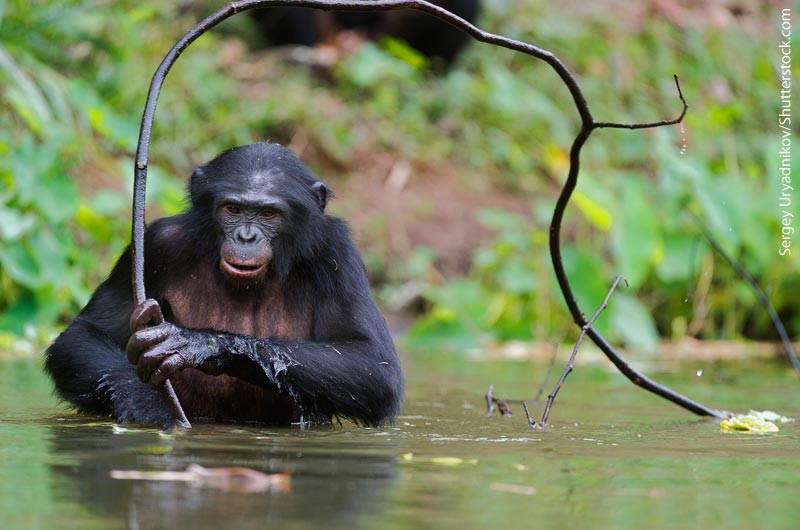
- Scientific name: Pan paniscus
- Type of animal: Mammal
- Family: Hominidae
- Where found: Africa
- Conservation status: Endangered
The bonobo is closely related to the common chimpanzee, and these species are our closest living relatives in the animal kingdom.
The bonobo can be distinguished from the chimpanzee by its dark face, pink lips, and center-parting.
The bonobo is found in the rainforests of Central Africa.
Discover More With Active Wild
You can find out more about the bonobo on this page: Bonobo Facts
Discover more about primates on this page: Primates - The Ultimate Guide
See more African animals on this page: African Animals List with Pictures & Facts
Bowerbird
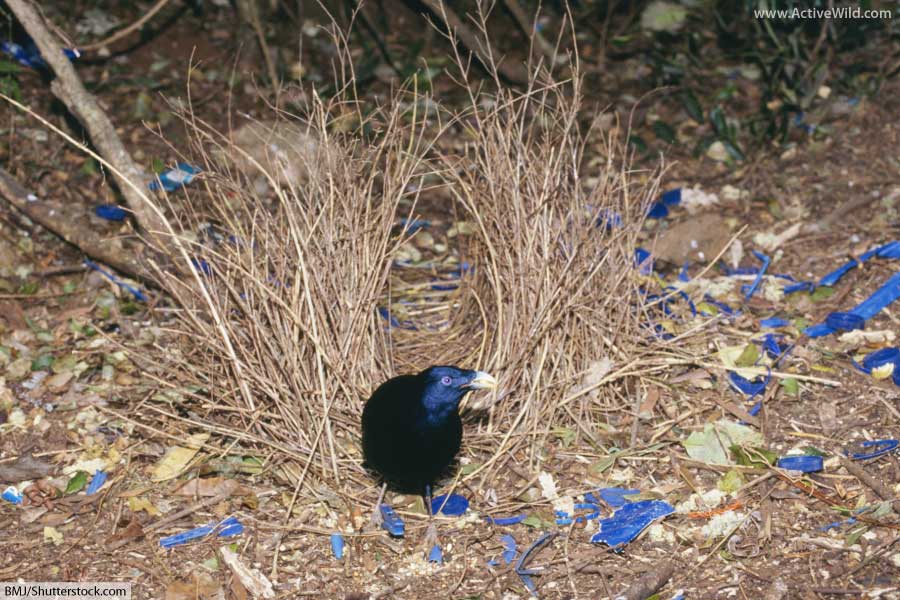
- Type of animal: Bird
- Family: Ptilonorhynchidae
- Where found: Australia; New Guinea
- Conservation status: Various
Bowerbirds are passerines (perching birds) found in Australia and New Guinea.
During the mating season, male bowerbirds build intricate structures known as bowers in order to attract females.
Discover More With Active Wild
You can see more Australian animals on this page: Australian Animals List with Pictures & Facts
Find out more about birds on this page: Birds - The Ultimate Guide
Discover more amazing birds on this page: Types of Birds
Brown Bear

- Scientific name: Ursus arctos
- Type of animal: Mammal
- Family: Ursidae
- Where found: North America, Europe, Asia
- Conservation status: Least Concern
The brown bear is a large carnivorous mammal found in North America and northern Europe. It has the largest range (the area in which it is found) of any bear.
The brown bear is, on average, smaller than the polar bear. However, the Kodiak bear subspecies of brown bear, which is found on the Kodiak Islands of Alaska, is similar in size to, if not larger than, its Arctic cousin.
Other well-known subspecies of brown bear include the grizzly bear and the Eurasian brown bear.
Discover More With Active Wild
You can find out more about the brown bear on this page: Brown Bear Facts
See pictures and facts on EVERY species of bear on this page: Types Of Bears
Become a bear expert: Bears - The Ultimate Guide
Bull Shark
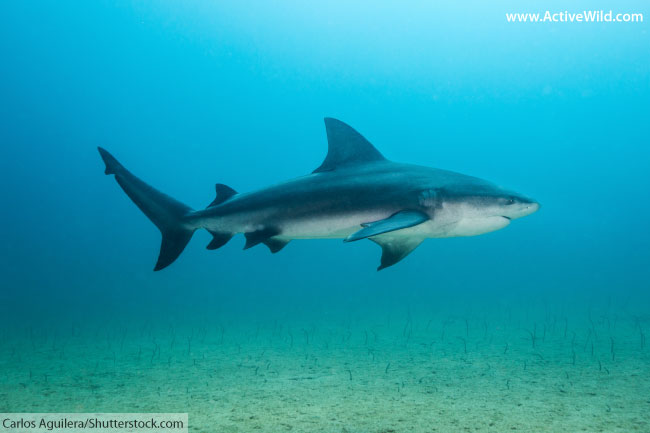
- Scientific name: Carcharhinus leucas
- Type of animal: Fish
- Family: Carcharhinidae
- Where found: Warm, coastal waters worldwide.
- Conservation status: Vulnerable
The bull shark is a large, predatory fish. It inhabits warm waters close to the shore, and will also enter brackish water (a mixture of salt water and freshwater) and freshwater estuaries and rivers.
This 8 ft. / 2.44 m long fish is thought to be responsible for a large proportion of near-shore shark attacks.
The bull shark is a member of the requiem shark family, Carcharhinidae.
Discover More With Active Wild
You can see more sharks on this page: Types Of Sharks - Pictures & Facts
Find out more about the life-cycle of a shark on this page: Do Sharks Lay Eggs?
Discover more amazing ocean animals on this page: Ocean Animals
Bullet Ant
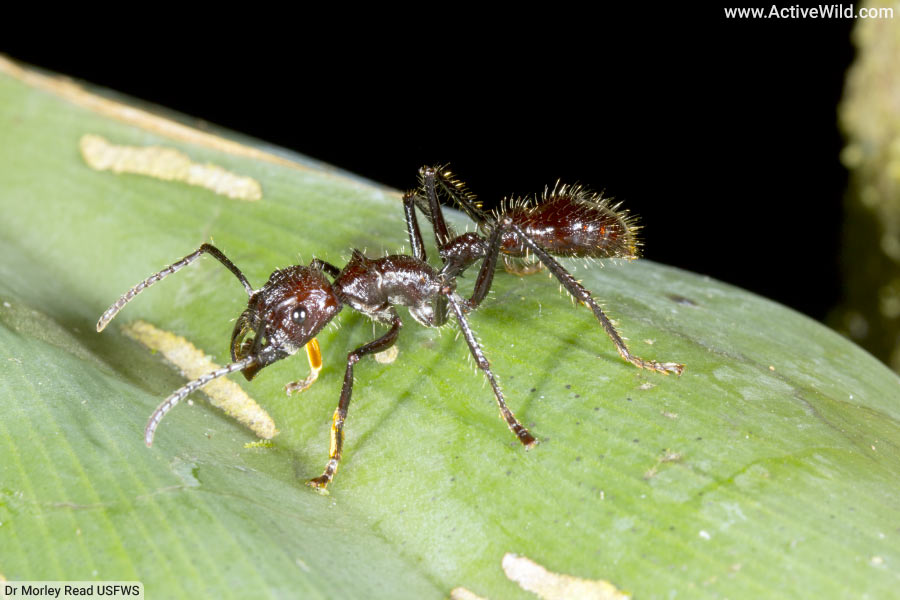
- Scientific name: Paraponera clavata
- Type of animal: Insect
- Family: Formicidae
- Where found: South America; Central America
- Conservation status: Unassessed
The bullet ant is a large ant that lives in the rainforests of Central and South America. The species is famous for the potency of its sting, which rated the world’s most painful on the Schmidt sting pain index. The pain from a bullet ant’s sting has been likened to being shot, hence the species’ name.
Discover More With Active Wild
You can find out more about the bullet ant on this page: Bullet Ant Facts
See more rainforest animals on this page: Rainforest Animals List with Pictures & Facts
Discover more about insects: Insects – The Ultimate Guide
Find out why insects are animals: Are Insects Animals?
Bumblebee
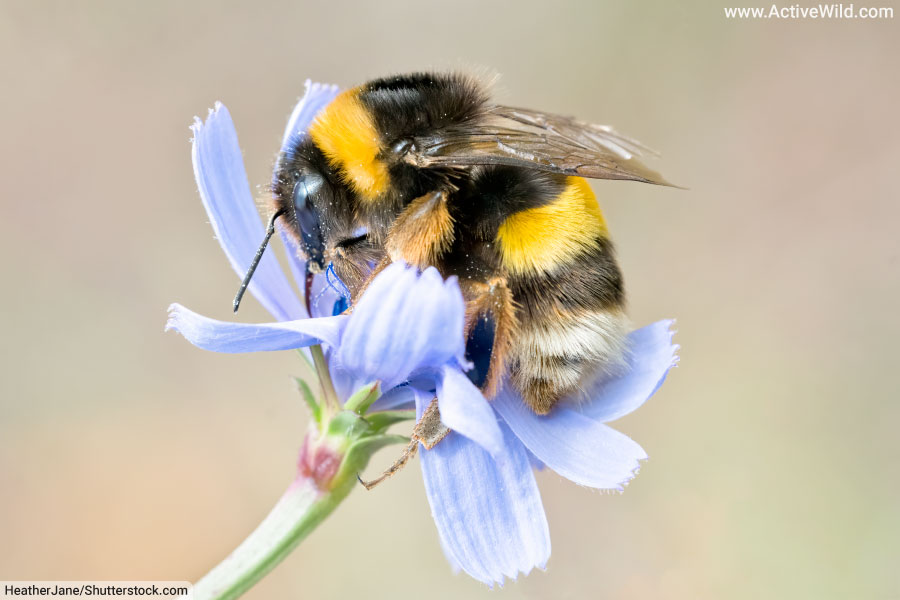
- Type of animal: Insect
- Order: Hymenoptera
- Where found: All continents except Antarctica and Australia (introduced in Tasmania)
There are 292 species of bumblebee (source https://www.catalogueoflife.org/data/taxon/62H8K); together, they make up the genus Bombus. This group is part of the family Apidae, which also contains several other, related bee groups, such as honey bees and stingless bees.
Bumblebees have uniquely-shaped, rounded bodies with a high volume to surface area ratio. This conserves body heat, allowing bumblebees to be active in lower temperatures than other insects.
A bumblebee’s distinctive black and yellow striped pattern warns potential predators that bumblebees can sting. This type of visual warning is an example of “Aposematism”.
(Another example of aposematic coloring is the brightly-colored, and highly poisonous, poison dart frogs of South America.)
Bumblebees are social insects that live in colonies consisting of a single queen and a large number of female worker bees.
There is a strict dominance hierarchy within a colony; younger generations take care of the larvae, while the older bees forage for nectar and pollen, which is used for making honey.
Only the queen bee produces offspring. Drones (male bees) appear once the colony is established. They mate with newly-hatched virgin queens, who will establish colonies of their own the following year.
Bumblebees are of great economic importance to humans due to their job as pollinators.
Discover More With Active Wild
Discover an endangered US bumblebee: Rusty-Patched Bumblebee Facts
Discover more about insects: Insects – The Ultimate Guide
Find out why insects are animals: Are Insects Animals?
Buzzard (Common)
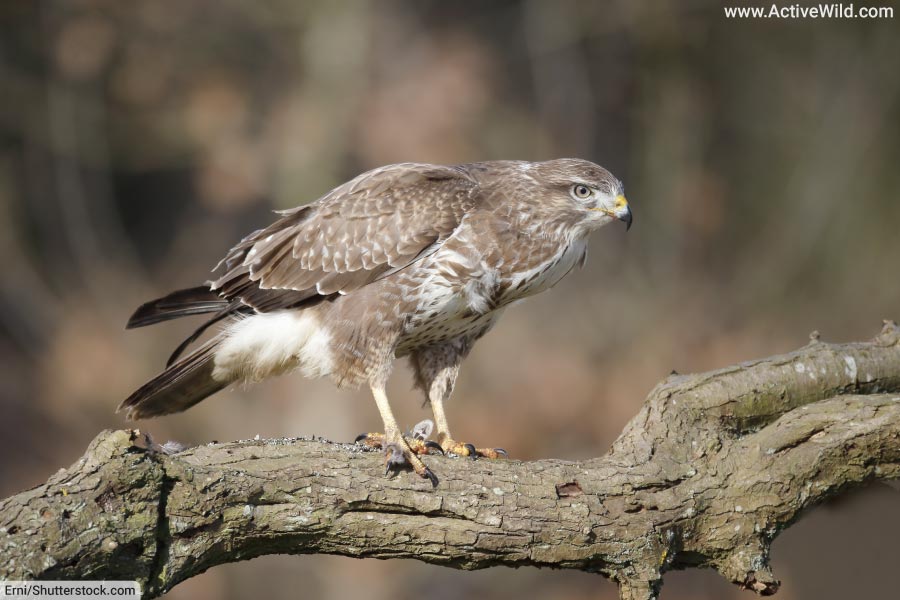
- Scientific name: Buteo buteo
- Type of animal: Bird
- Family: Accipitridae
- Where found: Europe; Asia; Africa
- Conservation status: Least Concern
The common buzzard is one of many birds of prey known as “buzzards”. (In Europe, birds of genus Buteo are known as “buzzards”, while in North America they are known as “hawks”.)
The common buzzard is found throughout much of Europe and Asia, and during the winter some populations migrate as far as South Africa. It typically inhabits woodlands and forests, but occasionally is seen in more open habitats.
The common buzzard (known simply as the “buzzard” in the UK) is a large, wide-winged bird, with mottled brown / grey plumage. It has a wingspan of up to 1.4 m / 4.59 ft.
The buzzard is often seen circling on thermals to gain height, and can be quite vocal, with a distinctive “mewing” cry.
Discover More With Active Wild
You can see more British birds on this page: Common British Birds List with Pictures
Become a bird expert: Birds - The Ultimate Guide
Check out our British Bird ID Quiz for Android: British Bird ID Quiz for Android
Animals That Start With B: Conclusion
We hope that you’ve discovered some interesting animals with names beginning with B on this page.
You can discover more animals in our A to Z animals section by clicking on the letters below…




























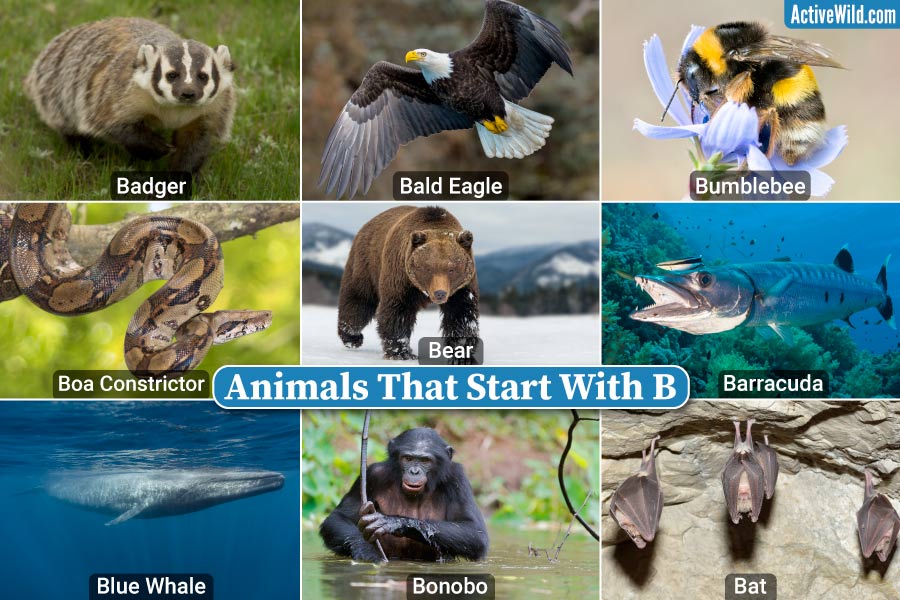
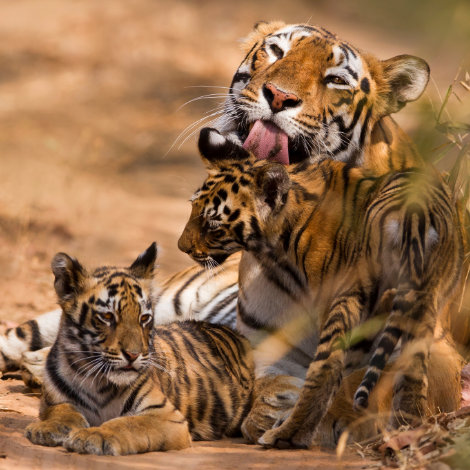
Bomber worms?
Blobfish?
black widow
I did not see a Brazilian wandering spider
There is no barn owl
You missed the blue ant
What about a bottle nose dolphin?
Good shout!